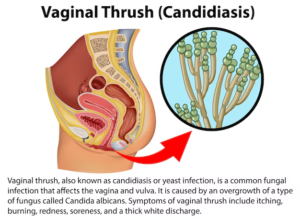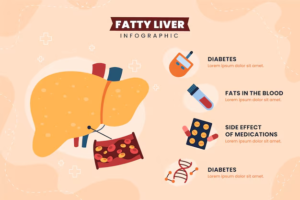Understanding Thrombocytopenia: An Ayurvedic Perspective
Understanding Thrombocytopenia: An Ayurvedic Perspective, characterized by low platelet counts, can lead to increased bleeding and bruising, impacting overall health and well-being. In this blog, we’ll explore thrombocytopenia through the lens of Ayurveda, discussing its causes, symptoms, and Ayurvedic remedies.
What is Thrombocytopenia?

Thrombocytopenia occurs when the platelet count falls below the normal range of 150,000 to 450,000 platelets per microliter of blood. Platelets are essential for blood clotting; thus, a reduction can lead to excessive bleeding, easy bruising, and even complications in severe cases.
Causes of Thrombocytopenia
In Ayurveda, health is viewed as a balance of three doshas: Vata, Pitta, and Kapha. Thrombocytopenia can be attributed to imbalances in these doshas, leading to the following potential causes:
- Infections: Viral infections, such as dengue or hepatitis, can deplete platelet levels.
- Autoimmune Disorders: Conditions where the body’s immune system mistakenly attacks platelets.
- Bone Marrow Disorders: Issues with bone marrow production can affect platelet levels.
- Medications: Certain medications can induce thrombocytopenia as a side effect.
- Nutritional Deficiencies: Lack of essential nutrients, particularly vitamin B12, folate, and iron, can contribute to low platelet counts.
Ayurvedic Understanding of Thrombocytopenia
From an Ayurvedic perspective, thrombocytopenia may be viewed as a condition arising from the derangement of the blood and its components. The Srotas (channels) responsible for blood circulation might be obstructed, or there might be an imbalance in Rasa Dhatu (plasma) and Rakta Dhatu (blood).
- Vata Imbalance: Excessive Vata can lead to dryness and impair the body’s ability to produce adequate blood components.
- Pitta Imbalance: An excess of Pitta may cause inflammation, which can affect platelet production and lifespan.
- Kapha Imbalance: A predominant Kapha can lead to sluggishness in bodily processes, potentially hindering the synthesis of platelets.
Symptoms of Thrombocytopenia
Common symptoms associated with thrombocytopenia may include:
- Easy bruising
- Prolonged bleeding from cuts
- Petechiae (small red or purple spots on the skin)
- Fatigue
- Nosebleeds or bleeding gums
Diagnosis
- Pulse Diagnosis: Assessing the quality of the pulse to identify imbalances in the doshas.
- Tongue Examination: Observing the tongue’s coating and color can indicate imbalances.
- Medical History: Gathering comprehensive information on diet, lifestyle, and previous health issues.
Ayurvedic Treatments for Thrombocytopenia
Ayurveda emphasizes a personalized approach, focusing on dietary modifications, herbal remedies, and lifestyle changes.
1. Dietary Recommendations
- Increase Iron-Rich Foods: Include spinach, legumes, and dates to enhance blood production.
- Vitamin B12 and Folate: Incorporate dairy products, eggs, leafy greens, and whole grains to support platelet synthesis.
- Hydration: Maintain adequate fluid intake to support circulation and overall health.
- Avoid Processed Foods: Minimize intake of processed and fried foods that can exacerbate inflammation.
2. Herbal Remedies
- Papaya Leaf Extract: Known to enhance platelet production, papaya leaf extract is commonly used in Ayurvedic treatments for dengue and other related conditions.
- Ashwagandha (Withania somnifera): This adaptogenic herb helps to strengthen the immune system and promote overall vitality.
- Ginger (Zingiber officinale): Known for its anti-inflammatory properties, ginger can aid digestion and improve circulation.
- Turmeric (Curcuma longa): Contains curcumin, which has anti-inflammatory and antioxidant properties that can support overall health.
3. Lifestyle Modifications
- Yoga and Pranayama: Incorporating yoga poses and breathing exercises can help reduce stress and improve circulation.
- Adequate Sleep: Prioritizing rest is essential for recovery and overall health.
- Regular Check-ups: Monitoring platelet levels regularly with your healthcare provider can help manage the condition effectively.
The Role of Detoxification
Ayurvedic detoxification (Panchakarma) can be beneficial in restoring balance and improving overall health. Procedures like Virechana (purgation) or Basti (enema) can help eliminate toxins that may contribute to blood disorders.
Managing Stress
Stress can exacerbate health conditions, including thrombocytopenia. Engaging in mindfulness practices, such as meditation and gentle exercises, can help manage stress levels and improve overall well-being.
Potential Risks and Considerations
While Ayurveda offers numerous benefits, it’s crucial to approach treatment with caution. Always consult with a qualified Ayurvedic practitioner or healthcare provider before starting any new treatment, especially if you have underlying health conditions or are on medication.
Conclusion
Understanding Thrombocytopenia: An Ayurvedic Perspective, though a concerning condition, can be managed effectively through Ayurveda. By addressing dietary needs, utilizing herbal remedies, and making lifestyle changes, individuals can work towards restoring their platelet counts and overall health. Always remember that Ayurveda emphasizes personalized care, so it’s essential to work with a knowledgeable practitioner to develop a tailored approach to treatment.
By integrating these Ayurvedic principles into daily life, individuals can foster a holistic approach to health, paving the way for a balanced and vibrant life. Embracing Ayurveda not only addresses the symptoms of thrombocytopenia but also nurtures the body, mind, and spirit, promoting overall wellness.








Leave a reply